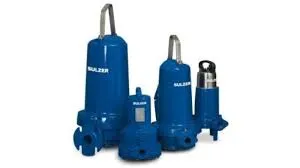Arabic
- Afrikaans
- Albanian
- Amharic
- Arabic
- Armenian
- Azerbaijani
- Basque
- Belarusian
- Bengali
- Bosnian
- Bulgarian
- Catalan
- Cebuano
- Corsican
- Croatian
- Czech
- Danish
- Dutch
- English
- Esperanto
- Estonian
- Finnish
- French
- Frisian
- Galician
- Georgian
- German
- Greek
- Gujarati
- Haitian Creole
- hausa
- hawaiian
- Hebrew
- Hindi
- Miao
- Hungarian
- Icelandic
- igbo
- Indonesian
- irish
- Italian
- Japanese
- Javanese
- Kannada
- kazakh
- Khmer
- Rwandese
- Korean
- Kurdish
- Kyrgyz
- Lao
- Latin
- Latvian
- Lithuanian
- Luxembourgish
- Macedonian
- Malgashi
- Malay
- Malayalam
- Maltese
- Maori
- Marathi
- Mongolian
- Myanmar
- Nepali
- Norwegian
- Norwegian
- Occitan
- Pashto
- Persian
- Polish
- Portuguese
- Punjabi
- Romanian
- Russian
- Samoan
- Scottish Gaelic
- Serbian
- Sesotho
- Shona
- Sindhi
- Sinhala
- Slovak
- Slovenian
- Somali
- Spanish
- Sundanese
- Swahili
- Swedish
- Tagalog
- Tajik
- Tamil
- Tatar
- Telugu
- Thai
- Turkish
- Turkmen
- Ukrainian
- Urdu
- Uighur
- Uzbek
- Vietnamese
- Welsh
- Bantu
- Yiddish
- Yoruba
- Zulu
Telephone: +86 13120555503
Email: frank@cypump.com
أغسطس . 21, 2024 05:52 Back to list
Efficient Wastewater Management Through Advanced Sewage Disposal Systems and Technologies
The Importance of Sewage Ejection Systems
Sewage ejection systems play a crucial role in modern waste management and sanitation infrastructure, particularly in areas where gravity-driven drainage is not feasible. These systems are essential for efficiently transporting wastewater from lower elevations to treatment facilities or mains in higher locations. By utilizing pumps and ejectors, sewage ejection systems facilitate the safe and effective removal of sewage, ensuring public health and environmental protection.
At the heart of a sewage ejection system is the sewage ejector pump, which is specifically designed to handle waste materials such as solids, liquids, and semi-solids that are typically found in sewage. These pumps are capable of dealing with larger particles compared to standard sump pumps, making them ideal for residential applications where toilets, sinks, and other fixtures are below the level of the main sewage line. This is particularly common in basements and lower levels of homes built in areas with low topography.
The basic operation of a sewage ejection system revolves around the use of a holding tank, where wastewater is collected before being pumped away. Once the wastewater reaches a certain level in the holding tank, the ejector pump is triggered automatically. The pump then pushes the sewage through a discharge pipe, often at a higher elevation, allowing it to connect with the main sewage line or treatment facility. This process not only helps in the efficient removal of sewage but also minimizes the risk of backups and overflows, which can lead to health hazards and environmental contamination.
sewage ejection system

Moreover, sewage ejection systems are also employed in commercial and industrial settings. Businesses such as restaurants, hotels, and manufacturing facilities often generate significant amounts of wastewater. In cases where wastewater must be transported over a distance or up a significant elevation, ejection systems prove to be invaluable. They allow these establishments to comply with local health regulations and reduce the risk of sewage spills that can cause serious environmental issues.
The design and installation of sewage ejection systems must adhere to strict regulations and standards to ensure they function effectively and safely. It is essential to consider factors such as the type of sewage being handled, the volume of wastewater produced, and the elevation differences involved in the system’s layout. Professional installation is often recommended, as improper setup can result in system failures, increased maintenance costs, or health risks.
While sewage ejection systems offer numerous benefits, regular maintenance is crucial to prevent issues such as pump failure or clogs in the discharge pipes. Homeowners and business operators must be vigilant in monitoring the system, keeping an eye on the indicators that suggest increased wear or potential malfunctions. Regular inspections and timely servicing can extend the lifespan of the equipment and ensure that it continues to operate efficiently.
In conclusion, sewage ejection systems are an essential component of modern waste management, particularly in locations where gravity drainage is impractical. By using pumps and holding tanks, these systems efficiently transport sewage to appropriate disposal or treatment points, contributing to public health and environmental safety. Proper design, installation, and maintenance are vital to the effective functioning of these systems, ensuring they perform reliably for years to come. As communities continue to grow and evolve, the role of sewage ejection systems will remain indispensable in safeguarding our water resources and maintaining sanitary living conditions.
-
Horizontal Split Case Pump with GPT-4 Turbo | High Efficiency
NewsAug.01,2025
-
ISG Series Pipeline Pump - Chi Yuan Pumps | High Efficiency, Durable Design
NewsAug.01,2025
-
Advanced Flue Gas Desulfurization Pump with GPT-4 Turbo | Durable & Efficient
NewsJul.31,2025
-
ISG Series Vertical Pipeline Pump - Chi Yuan Pumps | Advanced Hydraulic Design&Durable Construction
NewsJul.31,2025
-
ISG Series Vertical Pipeline Pump - Chi Yuan Pumps | Energy Efficient & Low Noise
NewsJul.31,2025
-
pipeline pump - Chi Yuan Pumps Co., LTD.|High Efficiency&Low Noise
NewsJul.31,2025










